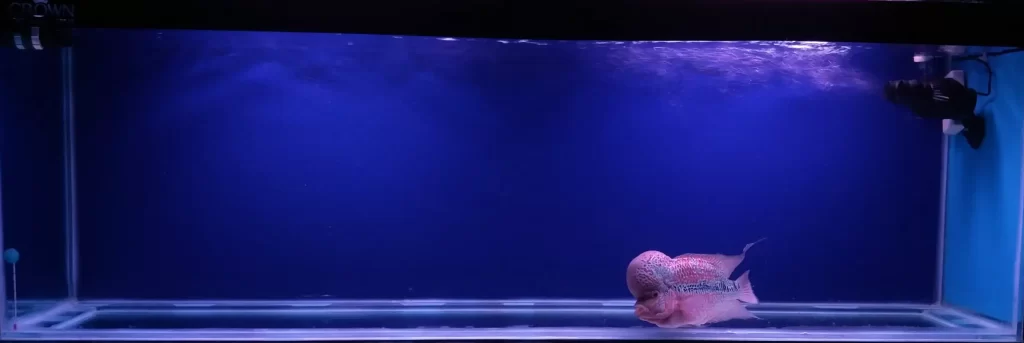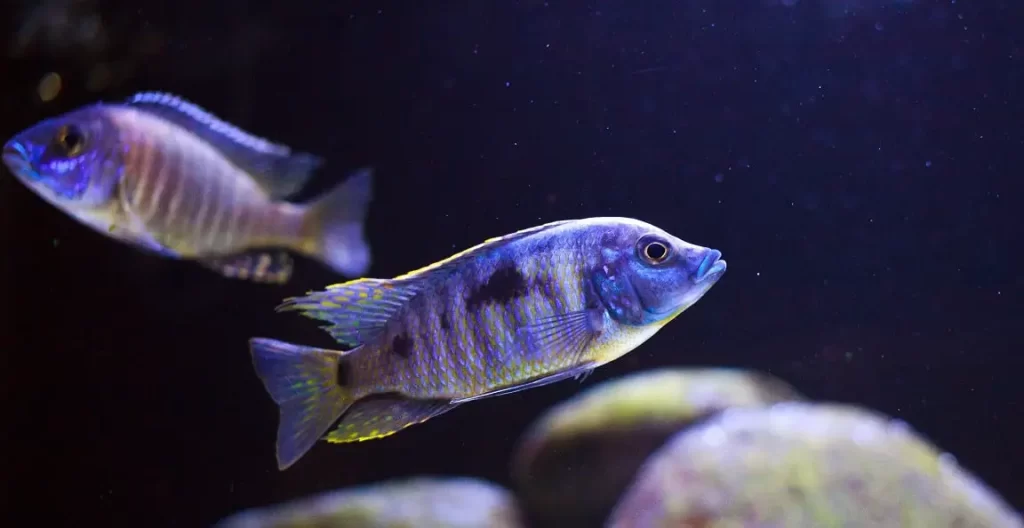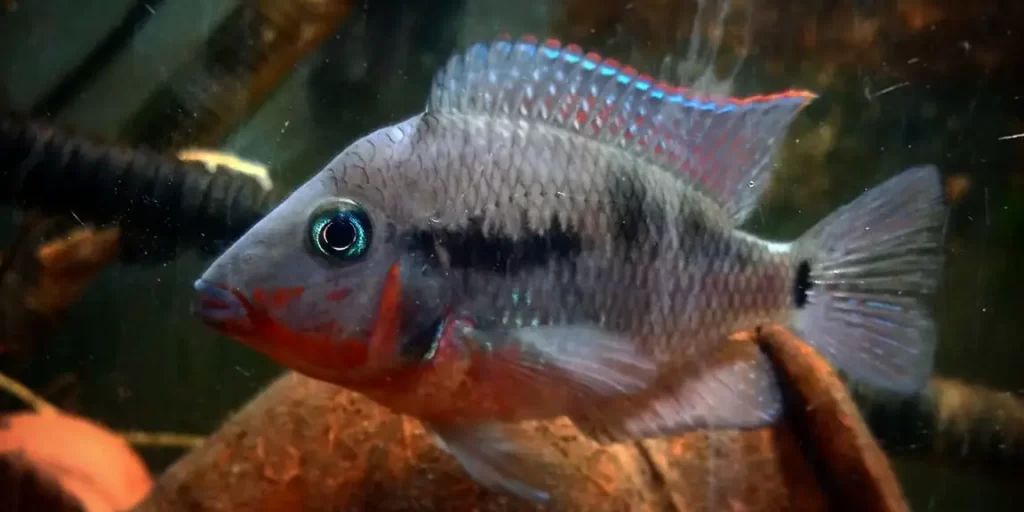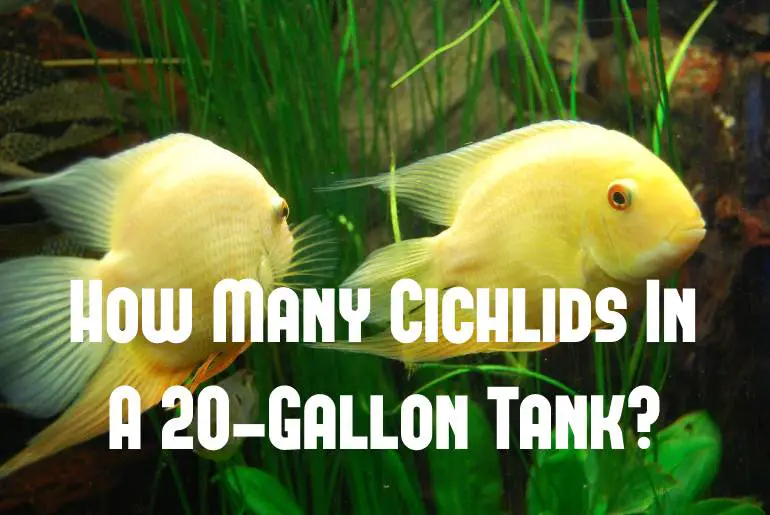Over the past couple of decades, there has been a rise in the demand for ornamental fish. The ornamental fish are the fish whose sole purpose is aesthetic home decorative items. If you are looking for the ornamental fish, you must consider the Flowerhorn Cichlid fish.
In this article, you will be walked through the step by step guide to set up a tank for Flowerhorn Cichlid.
Many aquarists who are looking for a colorful and central attraction in their aquarium tank mostly opt for flowerhorn fish. The flowerhorn fish has a beautiful mixture of colorations and are very gracefull. The fish possess a unique exotic beauty that draws the attention of many people.
Flowerhorns are one of the earliest man-made hybrid fish formed by selective breeding of different South African species. This means that flowerhorn fish are not present in the wild nature. In the case of finding such fish in the wild, it can possibly be because of people releasing them in the wild.
Flowerhorns genetic history is exactly unknown. However, people knew the first flowerhorn as luohans. Some Chinese fishkeeping enthusiasts bred them at the beginning of this century. People were able to see this fish in the market in from 1996. Since then, the fish is available widely in most pet stores worldwide.
Flowerhorn has a lot of positive aspects as your pet fish. However, there is a downside to it. You will find the fish very expensive. The fish will cost you around $100 to $150.
Despite the cost factor, if this is what you are looking for the aquarium, this article can help you with all the setup requirements you need to follow. Let’s begin with the tank setup for flowerhorns.
My Story With Flowerhorn
Flowerhorn fish has always been the fish that I wanted to keep in my aquarium ever since I saw the fish for the first time. And my dream came true when I brought my first flowerhorn home in May of 2016, it was a fry of 1 centimeter (I could not afford to buy a $100 worth fish). It was a gift from my brother’s friend who used to breed flowerhorn. I have experience in fish keeping ever since I was a child and was familiar with all the requirements that the fish needs [as I have researched about the fish before].
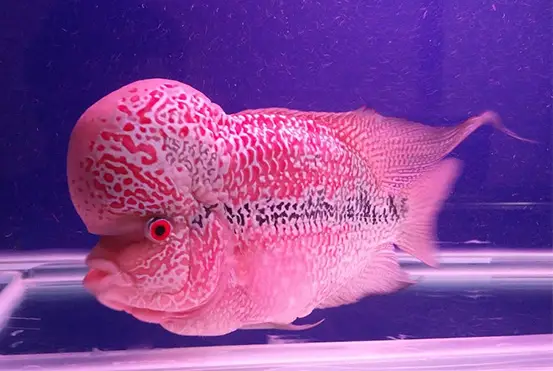
At the time, I had a 20-Gallon fish tank and was big enough for the flowerhorn fry (not enough for a full-grown Flowerhorn fish). So, I acclimated the fish to my tank, as the fry are delicate, I brought the tank water from my brothers home too so that the new water parameter won’t stress out or shock the fish.
The tank had basic set up, an internal power filter with biological, mechanical and chemical filter media, and automatic heater (200w), a bare bottom tank without any substrate, and decent aquarium light.
I kept him alone in the tank because flowerhorn are aggressive fish and do not wants to share his territory with any other fish.
As I loved the fish, I took good care of the fish, fed him a good diet, never missed water changes every week. His primary diet was okiko flowerhorn food, hikari staple once in a week, live food once in a week and frozen food twice a week. He was like a child to me.
He slowly started to grow with time, and in six months his hump (kok) was out and I was so happy that the fish was from good genes.
In these years, he had got disease many times hole in the head, hexamita disease, white poop disease. And its common for a flowerhorn to get the disease as these fish are man-made hybrids. I was successful in treating his disease every single time. I have also written the procedure to the diseases I followed to treat in my other article: Flowerhorn disease and treatment. If you want to keep flowerhorn, you should be aware of every disease that the flowerhorn is prone to.
With time he got pretty big for a 20 Gallon tank so shift him to his new 40-Gallon tank. I brought a canister filter for better filtration, I added a new heater, and that was it. I used the rest of the equipment from my previous tank.
Again in a few months, I realized a 40-gallon tank wasn’t enough for him as he was growing pretty rapidly. So, I custom made my first aquarium that had 180 Gallon capacity just for my flowerhorn. As the local pet store didn’t have a canister filter for 180-Gallon tank and was expensive to use 2 canister filters, I custom-made a sump filter for my new tank (used the 40-Gallon tank where my flowerhorn lived previously).
At that time, I used to follow Joey Mullen’s “The King of DIY” YouTube channel and got inspired to make my aquarium a sump filter. And ever since, I am a fan of a sump filter. So, calculating the volume of the tank and the sump, the tank’s capacity is 220-Gallon for a single fish.
With the new tank, I brought new equipment like the wave-maker to circulate the tank water, a powerful water pump to transfer water from the sump to the main tank, a UV sterilizer, tons of biological media, filter floss – mechanical filter media and activated carbon as chemical media. I spend a lot of money on the sump however was worth the money. The sump filter really helped the tank water parameter to remain constant, all I had to do is change 10% water every week.
Here is a short video clip of the tank when I added the sump.
Here is the image of the sump filter.
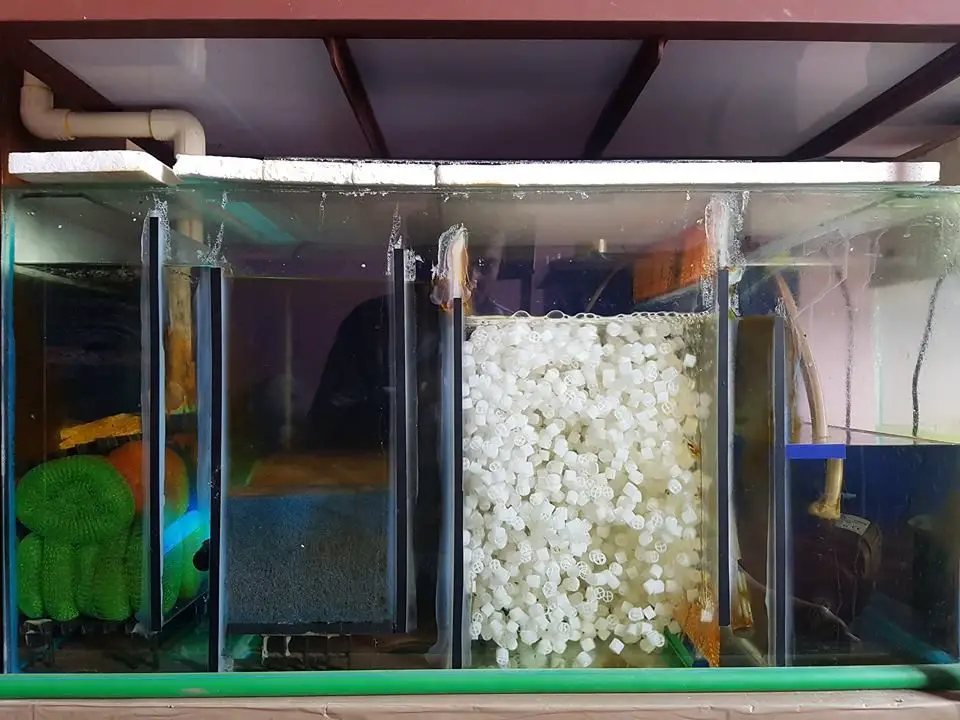
And this is how he looks in the tank.
Now, it’s been almost 4 years that my flowerhorn is living happily in my tank he has got a great personality. Although flowerhorn fish is an aggressive fish and has bitten me dozens of times, I love him from the bottom of my heart.
Now, I am sharing my experience on how to set up a tank for flowerhorn so that it would be easier for you and help you to set up yours the right way.
How to Set up a Tank for Flowerhorn
When keeping pet fish, the most important thing you need, apart from the fish itself, is the aquarium tank. Flowerhorns are extremely interactive fish. Even though the fish is hardy and can adapt to water parameters, you will still need a good tank set up.
Do not worry much about the tank set up. You will be able to take care of the fish even if you are a beginner and you have no experience with this fish. Here are some of the guidelines that you can follow.
Tank Size
There is a common misconception that smaller aquariums are easy to manage. This is not true in any way. First, even though you can get a smaller aquarium for fish such as tetras, it is not possible to get a very small tank for flowerhorn. This is because flowerhorn is a very big fish. In fact, these fish can grow up to 16 inches.
Therefore, the tank size should be appropriate with the fish size. I would recommend a tank size of at least 75 gallons. You can also get a bigger tank, as this might not be enough size. The tank size could also be around 200-375-gallons.
Most of you might feel that this tank size is very large. Is it necessary? If you ask me, the answer is, yes! Flowerhorns are one of the fastest-growing fish. There can be a 1-inch increase in size every month.
Filtration
Most hobbyists are still confused regarding the installment of filters into their tank. The main reason people prefer to install a filtration system in their tank is that it can maintain the water quality. This means that it can assist you in cleaning the water.
You can see the water in the tank becoming dirtier after some time. Even if the tank water looks clear, it might contain toxins that as not visible to our naked eyes. This is bound to happen even if you are very careful and look after the tank daily. This will happen due to the tank being a closed ecosystem. Different foods that you will feed your fish, fish excretes, etc. will make the water contaminated.
Installing filters will not only make your task easier but also breaks down toxins into less harmful compounds. The filters also help in enhancing the nitrogen cycle of your tank. This generally means that it will break toxins like ammonia to nitrites and nitrites into nitrogen, which gets removed during the water change.
For flowerhorn, the tank you should choose should be very big. A bigger tank requires a bigger filtration system. Thus, you can also choose filters that can comprehend the tank size. The best choice of the tank for this fish can be Canister Filters. This type of filter is more effective than internal filters. If you ask me, spend a little buck on the sump filter they are the best type of filtration system that you can ever keep for your tank.
Canister filters are inclosed, you cannot see what’s going on inside that filter, sometimes due to the debris from the tank, canister filter can clog failing to filter your tank water. Likewise, the size of a canister filter is small as compared to a sump system you have the limitation of filter media to add in a canister filter. As for the sump system, you can design as big as you want and house as much equipment as you want.
Heater
Some fish can thrive in water that has normal or room temperature. In such a case, you might not need to add heaters.
Most people commonly use aquarium heaters so that the tank can have a constant water temperature. This is necessary as a sudden drop in the temperature in cold weather can cause great fluctuations in the tank’s environment and fish health as the body temperature of the fish depends on the temperature of the water.
For flowerhorn fish, you need the water temperature of at least 80° F. This is not our normal temperature. Therefore, you can only achieve this temperature by installing the water heater. An automatic heater will provide your tank with a consistent temperature. A 75 Gallon aquarium needs a heater capable of about 300 watts. So, if your aquarium is big, you will need to add two heaters rather than using one super-strong one.
Substrate
Flowerhorns are a large species. For this reason, you need to be careful while inserting the substrate, as the fish have a tendency to swallow the substrate with the foods. Therefore, it is better for this fish if you use mono-colored gravel and plenty of rocks.
Other popular choices for the substrate are large pieces of tiles, bare bottom, and sand substrates.
However, I choose to go for bare-bottom for my flowerhorn tank. What happens with a substrated tank is that over time, due to the stuck of uneaten foods, fish poop, ammonia tends to grow under the substrate which can lead to a deadlier result.
A bare-bottom tank is easier to clean and maintain.
Decorations
It is tricky and a bit complicated to introduce any decorations in a flowerhorn tank. Flowerhorn loves to dig into the plants as well as substrates. This will result in the breaking down of live plants.
Flowerhorns appreciate crooks and crannies as decorations when they are young. However, as the fish grows they will need more space to swim so you will need to remove some decoration.
Flowerhorns also can get hurt from the decoration therefore; you will need to be careful. Keeping live plants is not a great option for these fish as they will tear up or uproot the plants.
So, my recommendation is “Do not use any decoration in your flowerhorn tank.”
Lighting
Good lighting can bring out the flowerhorn best coloration. You should provide the tank with indirect sunlight and position the tank accordingly. If this is not possible then you can install artificial lighting into the tank.
You should never put flowerhorn in a dark tank. Without proper lighting, the skin of the fish can get dull and dark. Thus, to maintain the beauty of the fish appropriate lighting should be present.
The flowerhorn fish are not that demanding when it comes to lighting. You can pick the lights of your choice. If I have to recommend lights for the fish tank, I would choose the LED lightings.
Water Parameters
As mentioned earlier in this article, flowerhorn is an artificial hybrid species. Thus, different flowerhorn can require different necessities. Water stability is the most important part of the welfare of any fish. Flowerhorn are prone to diseases so you will need to maintain your aquarium water parameter than any other fish.
Here are some of the guidelines you can follow to maintain the water parameters. You will need test kits for testing pH, hardness, etc.
pH
The pH level for the flowerhorn should be within the range of 7.2 to 7.6. You can also consider this as the ideal pH level. A high pH level increases the growth of Kok. Kok is the humps that is present on top of the fish’s head. Whereas, the low pH level helps in the development of bright colors.
Hardness
The most preferred range for water hardness for this fish is between 6 to 20 dGH.
It is also important that you use liquid test kits and not test strips to monitor these parameters, as test strips are less accurate.
Temperature
You need to maintain the temperature of the tank at any cost. The temperature should be within the range of 80 to 85°F all the time. Therefore, you will need a thermometer to monitor the temperature. Also, make sure to put the thermometer away from your heater.
Depending on how big is the tank, get two heaters for your tank if it’s over a 100-gallon.
Water Cycle
The tank is just an artificial ecosystem and after sometimes, the water evaporates and there will be the development of various toxins. This is inevitable even when you try to maintain the water regularly.
The nitrogen cycle is the cycle where there is the conversion of toxic compounds like ammonia and nitrite and chemicals into less harmful nitrates. This nitrogen gets oxidized and is consumed by the aquarium plants you have planted. This is a natural process and does not need any human intervention. This process breaks down harmful chemicals like ammonia into nitrites by partial oxidation of ammonium ions. Then the bacteria who love nitrite convert into nitrate. This is why you will need to add a lot of bio media. Biological media is the house to all the beneficial bacteria that feed on the toxins. The materials like urine, excrement, foodstuffs, plants, etc. increase the ammonia level in your tank.
Flowerhorn fish specifically are extremely sensitive to ammonia and nitrite. Hence, you should wait to complete the cycle before adding the fish. The importance of planting vegetation in your tank is to improve the nitrogen cycle in the tank. you can go for refugium where you can add plants in your sump filter. Do not add plants to the main/display tank.
When you think that the cycle is complete, you can test for it. Until and unless the tank has ammonia and nitrite and nitrate level indicated as 0, you should not add flowerhorn fish into the tank.
Flowerhorn Tank Mates
There are different theories about adding tank mates in a flowerhorn tank. Some might say it is a bad idea, other species are known to suffer from flowerhorn. In most cases, this is true but there are also cases where flowerhorn are nice to their tank mates.
Most people recommend avoiding keeping any companion to these fish because of the fish’s large size and aggressive nature. The size of this fish can get very much intimidating to other species so you should ensure that you do not keep any tiny fish with them.
This does not mean that flowerhorn is very incompatible with other tank species. Some of the suitable tank mates can be Sailfin Pleco, Common Pleco, Tiger Oscar, Large Bichirs, Flowerhorn of different sex, and other large Cichlids.
Always monitor their behavior closely, fish with this nature always tries to dominate its tankmates. Remove any fish if they start to fight.
The species to be avoided as tank mates for flowerhorn can be fish that are smaller than 10 inches. You should also separate flowerhorn with invertebrates such as shrimps, snails or any crayfish.
Is Flowerhorn Better if Living Alone?
Hell Yes! There is always uncertainty about how flowerhorns will behave with other species. The aggressive nature of this fish can complicate things for new users. So, keep them alone.
If you are new to keeping this fish, you will have to monitor them constantly and doing that is not practical every time.
Flowerhorns do interact with the owners and not with other species. If you keep this fish with others then this will decrease their interacting behavior. The flowerhorn will exhaust themselves by playing with other tank mates.
Fish Diet
The diet is the most essential part when it comes to fish being healthy and living a prosperous life. You need to maintain a balanced diet so that your fish do not lack the essential nutrients. If this happens, the fish can easily suffer from various diseases easily.
Flowerhorns are not exactly hard to feed. This is because the fish are not precise at all regarding their foods. You only need to feed them with a diet that is rich in proteins. You do not even have to provide the fish with live foods. The fish will do just fine with dried and frozen foods.
However, micronutrients and vitamins are also essential for flowerhorns. Thus, the fish needs a staple pallet and supplements such as dried crickets, grasshoppers, mealworms, anchovies, and frozen shrimps. Other food items that you can include in the fish’s diet are white worms, blackworms, earthworms, and nightcrawlers.
You can feed the flowerhorns three times a day. Make sure you feed the fish at the same time. The amount you feed them can vary but ensure that you do not overfeed them. Overfeeding can lead to excess ammonia, nitrites, and nitrates. Therefore, you should feed the food that the fish can consume within 20 to 40 seconds.
Conclusion
Flowerhorns prefer slow-moving water with a lot to food. You can easily replicate the condition required by the fish. These fish are hardy and do not require a lot of care. You only need to care for the fish’s diet and the maintenance of the tank.
If you are a beginner then it will be a bit difficult to be familiar with this. Once you get the hang of it, you will enjoy it a lot. Not only that, you will create a good bond with your fish as well.
Remember that it is a great responsibility and hard work. With the right passion and effort, you can achieve a wonderful addition to your tank. Hope this article provided you with a good understanding of the requirements to set up the tank for flowerhorns. All the best and have fun with your fish.

